
4 April: A woman reacts while placing flowers in honour of the victims of the 3 April blast on the platform of Technological Institute metro station in Saint Petersburg. (c) NurPhoto/SIPA USA/PA Images. All rights reserved.In the first week of April 2017, Central Asia rose to global prominence as an exporter of Islamist terrorism. In St Petersburg, an ethnic Uzbek from southern Kyrgyzstan detonated a bomb on the city metro, taking 14 lives. A few days later, a citizen of Uzbekistan drove a truck into a store in Stockholm, killing four.
While few Central Asians have joined the Taliban and other Islamists in Afghanistan, many more have gone to join the so-called Islamic State. Estimates vary widely, reflecting the difficulty of tracking recruits who cross multiple borders, but perhaps somewhere between 2,000 and 4,000 Central Asian citizens have travelled to Syria and Iraq in the past five years. Central Asian militants were involved in the June 2016 Ataturk airport attack and January 2017 nightclub attack, both in Istanbul. Central Asians have certainly grabbed headlines with attacks in recent months. But these are not the first signs that global jihadism is spreading to Central Asia.
There’s no evidence that religious, economic or political root causes in Central Asia are responsible for its “export of terrorism”
Understandably, recent events have led to much discussion about terrorism and radicalisation in Central Asia. Leading analysts have sought to identify “root causes” in the region such as the rise of radical or non-traditional Islam, increasing poverty since the end of the Soviet Union and the lack of democracy as Central Asian regimes have stomped on any form of dissent.
There is, however, no evidence that religious, economic or political root causes in Central Asia are responsible for the region’s export of terrorism.
Firstly, there is very little terrorism in Central Asia itself. Just 62 of the global total of over 85,000 recorded incidents of terrorism from 2001-2015 took place in the five post-Soviet Central Asian republics. Central Asia lacks well-organised violent Islamist extremist organisations of the kind found in most Muslim-majority regions. Two of the 61 terrorist groups identified and proscribed by the United States have a Central Asia connection — the Islamic Movement of Uzbekistan and the Islamic Jihad Union. However, the track record of these particular groups in Central Asia itself is sketchy at best, with just a handful of suspected incidents since 2001 and none at all since 2010. Their only recorded attacks this decade are in the Afghanistan/Pakistan region. There is no space for the Islamic State’s diminishing caliphate in Central Asia itself.
Secondly, the search for root causes remains misguided given how few of the region’s conservative Muslims, how few of the many people who are politically repressed, and how few of the poor actually turn to violence. One cannot explain isolated actions in terms of general trends.
Moreover, these root causes are all questionable. As noted, Islamist groups have little foothold in the region and there is little evidence that socially conservative Muslims are more likely to be politically radical than more secularised Muslims. Few Central Asian terrorists are pious; fewer still have any formal religious education. For example, after a video of Akhtam Olimov, an Islamic State fighter from Tajikistan, appeared online in September 2014, his family was in shock. Neighbours commented that Olimov had never been particularly pious when growing up. “He never wore a beard,” or prayed regularly, before he went to Russia, his mother told reporters. After Bobojon Kurbonov, another Islamic State fighter from Tajikistan, was killed in August 2014, his brother told the media that “Bobodjon was not a religious man, and we do not understand how he was persuaded to go to war.”
The most telling argument against “root causes” is that few of the Central Asian ISIS recruits are radicalised in Central Asia itself. This is supported by Noah Tucker’s work on Uzbeks as well as Edward Lemon’s on Tajiks. Both the Stockholm and St Petersburg attackers left their home countries of Uzbekistan and Kyrgyzstan many years before the attacks. There is no evidence that they were radicalised before leaving.
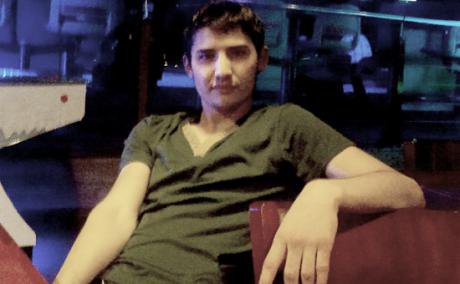
Akbarjon Jalilov, suspect in the St Petersburg metro attack in April. Photo from Jalilov’s personal page on VKontakte. Some rights reserved.The profile of Akbarjon Jalilov, the suspect in the St Petersburg terrorist attack, reflects this complex picture. Jalilov moved to Russia in 2011, becoming a driver. He was not particularly pious. A sushi chef and martial arts fan, Jalilov rarely prayed and never attended mosque according to his neighbours in Osh, Kyrgyzstan. Just two months before the attack, Jalilov visited his home in Osh, telling his family he wanted to get married and settle back in Kyrgyzstan. Jalilov’s social media profile showed no signs of extremist sentiments. His family reports that they did not see any change in his behaviour in the lead up to the bombing. Religion, poverty and even repression seem to play a limited role in his story.
So, if root causes in Central Asia do not explain radicalisation, what is causing Central Asians to join jihadist movements during their time abroad? The answer is a complex one. No single factor explains why an individual would decide to join an extremist group; each person’s story is different. Many experienced isolation, family breakdown or personal trauma, making them more vulnerable to the promises of terrorist recruiters. Not everyone is pushed into joining these groups. Many do so to seek adventure or brotherhood.
However, two factors stand out.
First of all, the volume, demographics and experiences of migration from Central Asia must be acknowledged. According to the World Bank, Central Asia has the two most migration-dependent economies in the world in Kyrgyzstan and Tajikistan. Islamist recruiters have targeted those working abroad. Between five and seven million citizens of Kyrgyzstan, Tajikistan and Uzbekistan — mainly young men — live and work in Russia. Often spending their late-adolescence away from their family home, they are subject to daily economic hardship, racial abuse and state harassment.
While migration is empowering for many, for others it is not. Over 80% of the known Tajik ISIS fighters, for example, were recruited while working as labour migrants in Russia
While migration is empowering for many, for others it is not. Migrant destinations are typically largely secular environments where Central Asian men’s status as Muslims is perceived as a security concern by their hosts. This cross-cutting religious identity comes to trump the local ties of kin or ethnicity that may have been more important at home. It is little wonder that a deviant minority of these millions are tempted by jihadism. Over 80% of the known Tajik ISIS fighters, for example, were recruited while working as labour migrants in Russia.
Most Central Asian migrants are literate and semi-skilled, but often work in jobs far below their capability and find themselves exploited by their employers. Far from being uneducated, almost 50% of the fighters are well-educated graduates with degrees from secular universities. Nasim Nabotov, for example, studied economics at Russia’s prestigious Moscow State University before dropping out to travel to Syria in April 2015. Although it is still popular to link a lack of education to vulnerability to extremist recruiting, decades of academic research has challenged this link. A 2016 report by the World Bank, for example, found that 69% of a sample of 3,803 ISIS fighters had at least a secondary-level education.
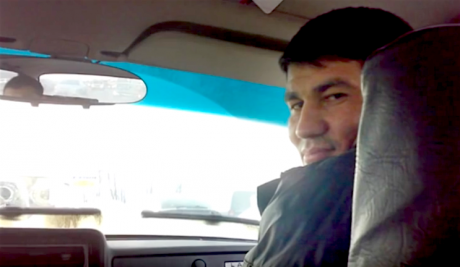
Uzbek citizen Rakhmat Akilov, suspect of the Stockholm terror attack. Image still via YouTube / Expressen TV. Some rights reserved.Second, transnational security governance by Russia and Central Asian states may be an immediate cause of extremism, rather than the solution. As the new book Dictators without Borders demonstrates, the extra-territorial security practices of Central Asian governments in Russia, Europe and beyond target political enemies, whether they are religious or secular, peaceful or violent. These practices are focused on regime security rather than international security, and are therefore not focused on preventing terrorism overseas.
Analysis of the Central Asian Political Exiles database suggests that both the security services of Tajikistan and Uzbekistan are increasingly active and brutal in their actions overseas. This may encourage isolated groups of young men to join violent extremist organisations in order to fight back. It is too early to say what the precise effects of such transnational security practices are on jihadism, but the hypothesis that these security practices act as a “recruiting sergeant” for ISIS is more plausible than broad-brush arguments about poor governance and state weakness causing extremism.
The security services of Tajikistan and Uzbekistan are increasingly active and brutal in their actions overseas. This may encourage isolated groups of young men to join violent extremist organisations to fight back
These two factors — the dislocation and isolation of young male labour migrants and the tactics of exporting repression by their home governments — may offer better answers to the question of why terrorism is being exported from Central Asia. However, it is important to acknowledge that we still know very little about this phenomenon and that it remains very rare. Policy research on this topic is currently weak and driven by misconceptions, while academic research is rare and often out-of-date. What we know tells us that these are people for whom radical ideas may be a symptom rather than a cause of their decision to find meaning in terrorist violence.
The Central Asian terrorists of St Petersburg and Stockholm were not terrorists when they left Kyrgyzstan and Uzbekistan several years before their attacks. According to the Uzbek Foreign Minister, the Stockholm attacker joined Islamic State after moving to Sweden in 2014. Nothing in Jalilov’s upbringing in Kyrgyzstan raised alarm bells.
What happened to these men in the transnational spaces of migration is therefore more important than root causes in Central Asia. We need to know the specific pathways of attackers in their lives beyond Central Asia to explain why the region is exporting terrorism.
Read more
Get our weekly email
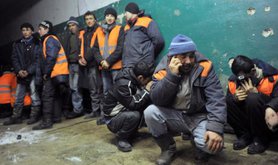
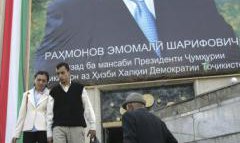

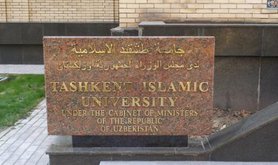
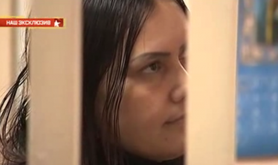
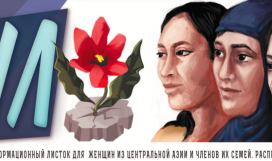

Comments
We encourage anyone to comment, please consult the oD commenting guidelines if you have any questions.